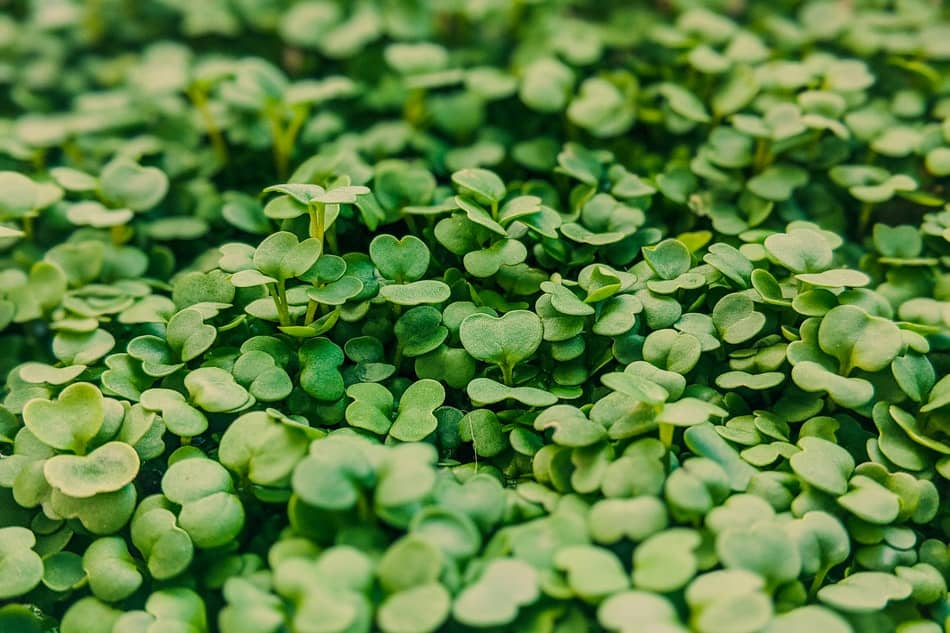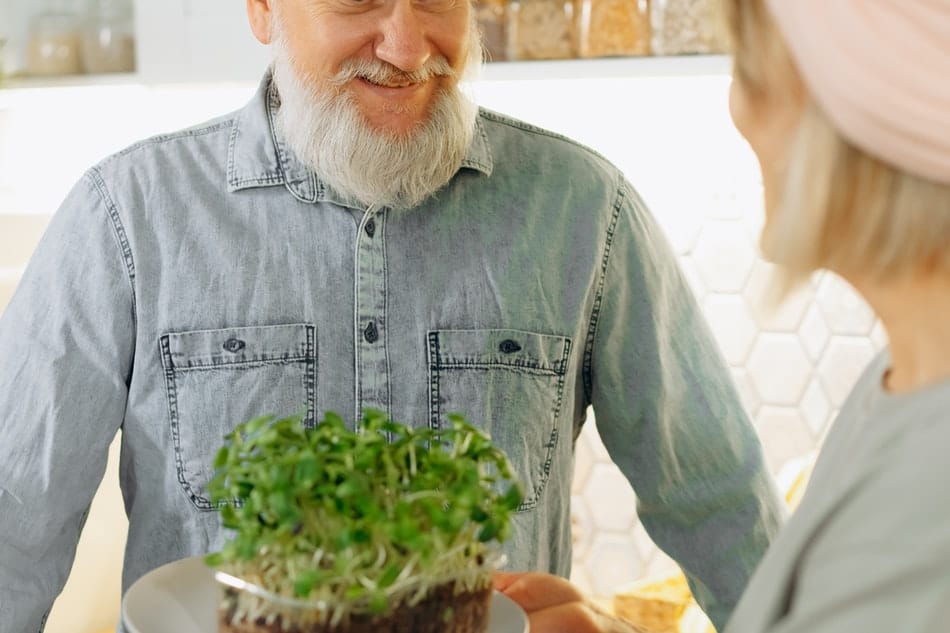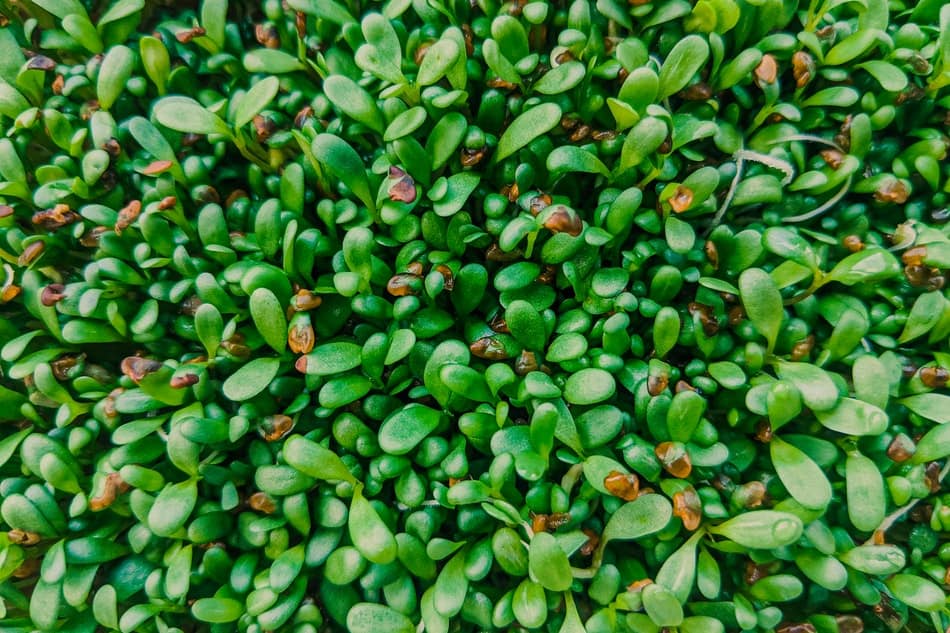Looking for a healthy and tasty snack? Sunflower microgreens are perfect for you! Learn how to eat sunflower microgreens in this article. Not only are they loaded with nutrients, but they also taste great. In this article, I will teach you how to eat sunflower microgreens in a variety of ways. Keep reading to learn more!
To eat sunflower microgreens, start by washing them thoroughly. Then, cut or tear the greens into bite-sized pieces. Add the sunflower microgreens to your desired dish, or eat them as a snacks.
About Sunflower Microgreens?
This is a type of edible plant that is grown from sunflower seeds. The name “microgreen” refers to the fact that they are harvested when they are still very young, typically between two and four weeks old. At this stage, sunflower microgreens are packed with nutrients and have a delicate, yet slightly nutty flavor.
While they may be small in size, sunflower microgreens pack a serious nutritional punch. They are an excellent source of vitamins C, and E, as well as iron, magnesium, and phosphorus. Sunflower microgreens also contain high levels of antioxidants and phytochemicals (beneficial plant compounds).

Health Benefits
Microgreens are a type of vegetable that is harvested when they are still young, typically between one and three weeks old. They are packed with nutrients and have a variety of health benefits. These are the benefits:
- Sunflower microgreens contain high levels of vitamins A and E. They are also a good source of carotenoids, which are antioxidants that can help protect your cells from damage.
- Sunflower microgreens may also help improve heart health. One study found that rats who were fed a diet containing sunflower microgreens had lower levels of bad cholesterol and triglycerides than those who were not fed the greens.
- Sunflower microgreens may also help boost your immune system. One study found that rats fed sunflower microgreens had higher levels of white blood cells, which are important for fighting off infection.
- Sunflower microgreens may also have anti-inflammatory properties. One study found that rats fed sunflower microgreens had lower levels of inflammation-causing molecules than those who were not fed the greens.
- Lastly, sunflower microgreens may help improve brain health. One study found that rats fed a diet containing sunflower microgreens performed better on tests of learning and memory than those who were not fed the greens.
So, there you have it! Five benefits of sunflower microgreens that show just how powerful these little greens can be. If you want a nutrient-packed addition to your diet, look no further than sunflower microgreens.
How To Eat Sunflower Microgreens?
When it comes to sunflower microgreens, there are a few different ways that you can go about eating them. One of the most popular ways is to simply add them to a salad. This will give your salad a bit of extra flavor and nutrition. Another option is to use them as a topping on sandwiches or wraps. They can also be used in soups or stir-fries.
If you want to get the most out of sunflower microgreens, then you should consider juicing them. This is because juicing helps to extract all of the nutrients from the greens. You can also add sunflower microgreens to smoothies or juices. If you do this, then make sure to drink the smoothie or juice right away so that the nutrients don’t have a chance to degrade.
No matter how you choose to eat sunflower microgreens, they are a great way to get more nutrition into your diet. They are also very easy to grow, so you can always have a fresh supply on hand. Give them a try today and see how you like them!
Can I Eat Sunflower Microgreens Everyday?
Sunflower microgreens are an excellent source of vitamins and minerals, and they can be eaten raw or cooked. They’re a great addition to salads, sandwiches, soups, and more.
So, can you eat sunflower microgreens every day? The answer is yes! Eating sunflower microgreens every day is a great way to improve your overall health. They’re packed with nutrients that are essential for good health, and they’re also very low in calories. So go ahead and add them to your diet! You’ll be glad you did.

What Does Sunflower Microgreens Taste Like?
Sunflower microgreens have a nutty taste with a slightly bitter edge. The texture is tender and crunchy, similar to alfalfa sprouts. They are often used as a garnish or added to salads for a pop of color and flavor.
If you’re looking for something different in your microgreen repertoire, give sunflower microgreens a try. You may be pleasantly surprised by their unique flavor and versatility.
How To Harvest Sunflower Microgreens?
Harvesting sunflower microgreens is a simple process. First, cut the sunflower plant just above the soil line using sharp scissors or a knife. Next, gently remove the roots from the soil. Finally, rinse the sunflower microgreens under cool water to remove any dirt or debris.
Once you have harvested your sunflower microgreens, they will need to be stored properly in order to maintain their freshness. The best way to store them is in a plastic bag or container with holes in it. Place the container in the refrigerator and use the microgreens within a week.
Now that you know how to harvest sunflower microgreens, you can enjoy them in all sorts of recipes! Try adding them to a salad, using them as a garnish on your favorite dish, or even incorporating them into a sandwich. No matter how you eat them, sunflower microgreens are sure to add a nutritious and delicious boost to your meal!
Final Words
Sunflower microgreens are a nutritious and flavorful addition to any meal. When harvested at the right time, they have a delicate flavor that is perfect for salads, sandwiches, and wraps. With their high nutrient content, sunflower microgreens are a great way to add vitamins, minerals, and antioxidants to your diet. So go ahead and give them a try! Your taste buds will thank you.
Related Articles

